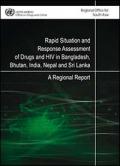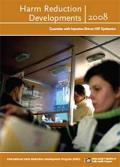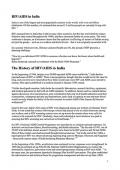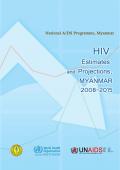What's New
Displaying results 4251 - 4260 of 4914

Resource | Publications,
Vietnam's HIV/AIDS epidemic is concentrated primarily among injecting drug users, commercial sex workers and men who have sex with men. Outreach workers regularly walk into neighborhoods in Hai Phong City with the hope of reaching these at-risk populations with information about HIV/AIDS and voluntary counseling and testing (VCT). The outreach workers encourage individuals to seek HIV counseling and testing at the Community Health Counseling Center in Hai Phong City.
Launched at the end of May, a new communications campaign will help to expand the reach of the VCT program. The campaign targets potential clients with information about HIV counseling and testing and the locations of VCT sites. Billboards and posters encourage clients to talk with counselors to discuss feelings of fear and concern, and to answer questions related to HIV/AIDS. The campaign also emphasizes the importance of testing as a crucial step in improving overall health and quality of life.

Resource | Publications,
The MDG Gap Task Force has assessed the global commitments contained in the framework of the Millennium Development Goals (MDGs) ratified by Governments at the various international events that followed the Millennium Summit. The United Nations Millennium Declaration emphasized that strengthened global partnerships for development were needed to provide the enabling environment for accelerating progress in reducing poverty, improving health and education, establishing gender equality and ensuring the protection of the environment as defined in the MDGs.
The main message of the present report is that while there has been progress on several counts, important gaps remain in delivering on the global commitments in the areas of aid, trade, debt relief, and access to new technologies and affordable essential medicines.

Resource | Publications,
Injecting drug use (opioids and pharmaceuticals) and HIV associated with injecting drug users (IDUs), has diffused rapidly in the South Asian region. Further, the sexual transmission of HIV from the IDUs to their non-injecting sexual partners has been established. Developing appropriate responses to this emerging problem requires a rapid situation and response assessment (RSRA) of drug users and their regular sexual partners. The United Nations Office on Drugs and Crime Regional Office for South Asia (UNODC ROSA) is implementing a regional project RAS/H13: Prevention of transmission of HIV among drug users in SAARC Countries. Through this project, a RSRA of HIV related risk behaviours, adverse health consequences, knowledge and attitudes relating to HIV/AIDS amongst drug users and their regular sex partners was carried out in five South Asian countries, namely, Bangladesh, Bhutan, India, Nepal and Sri Lanka.

Resource | Publications,
In 2007, IDUs comprised the largest share of total HIV cases in at least 20 nations in Asia and the former Soviet Union.
The percentage of cases attributed to injecting drug use is over 70 percent in some countries in Eastern Europe and Central Asia, the region where HIV is growing fastest. In many of these countries, harm reduction has made important inroads—all countries in Eastern Europe and the former Soviet Union except Turkmenistan had needle exchange programs in 2007. In most, programs remain too small to contain the HIV epidemic. Reports that new HIV cases among drug users have stabilized often reflect trends in testing rather than the impact of prevention.
The challenge for many of the hardest-hit countries, however, lies in translating commitments into practice, without sacrificing protection of human rights.

Resource | Publications,
India is one of the largest and most populated countries in the world, with over one billion inhabitants. Of this number, it's estimated that around 2.5 million people are currently living with HIV. HIV emerged later in India than it did in many other countries, but this has not limited its impact. Infection rates soared throughout the 1990s, and have increased further in recent years. The crisis continues to deepen, as it becomes clearer that the epidemic is affecting all sectors of Indian society, not just the groups – such as sex workers and truck drivers – that it was originally associated with.

Resource | Publications,
The two-decade-old HIV epidemic in Myanmar is largely concentrated among population subgroups with high-risk behaviors. Among reported AIDS cases of the year 2008 with the documented mode of transmission, 73% were due to unsafe sex, 3% due to injecting drug use, 3% from mother-to-child, and 2% due to blood transfusion. The male to female ratio among reported HIV-positive cases is 2.4:1.

Resource | Presentations,
Presentation of population size estimation of MSM in Cambodia in 2008 with Capture-Recapture Methodology in 6 cities.

Resource | Publications,
According to the latest estimates1 in 2007 in Asia there were around 4.9 million (range of 3.7 million-6.7 million) people living with HIV of whom 440,000 (range of 210,000-one million) became newly infected in the past year and approximately 300,000 (range of 250,000-470,000) died from AIDS-related illness. HIV prevalence in Asia-Pacific has a large variation from almost zero to 2.4 per cent in Papua province of Indonesia.2 Those values are lower than for many other parts of the world, particularly Africa. However, given the substantial number of people living in this region, even a low increasing prevalence of HIV would translate into millions of infections.

Resource | Publications,
HIV surveillance is the systematic and regular collection of information on the occurrence, distribution and trends in HIV infection and factors associated with infection for use for public health action. In concentrated epidemics, surveillance is conducted among populations who are at the highest risk of acquiring HIV and thus, are most critical for interventions.

Resource | Publications,
This HIV TRaC survey was conducted among high risk urban men in four cities – Phnom Penh, Siem Reap, Battambang and Sihanoukville – in December 2008. The main objectives of this and future rounds of the study are threefold:
1. To identify determinants of condom use at last sex and consistent condom use with sweethearts among high risk urban men;
2. To monitor changes in donor and project indicators, behaviors, and behavioral determinants over time;
3. To evaluate the impact of PSI/C’s communication campaign focusing on behaviors and behavioral determinants within this target group. Although this is a baseline study, the sample has overlap with an earlier study conducted in Cambodia, allowing for evaluation analysis to be conducted on a sub-set of the sample from this round of the survey.





